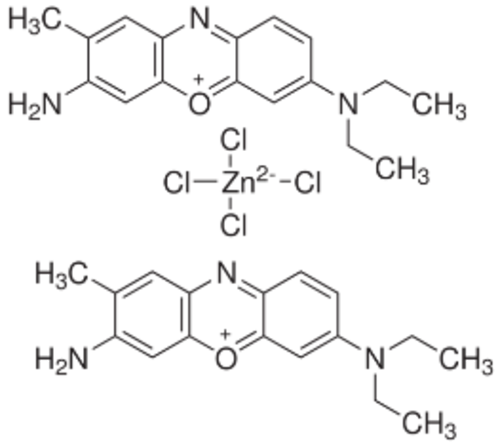1400-62-0 Orcein Chemical Price And Quantity
- 1 Bottle
- 28000 INR/Container
- 28000.00 - 30000.00 INR/Container
1400-62-0 Orcein Chemical Product Specifications
- 1400-62-0
1400-62-0 Orcein Chemical Trade Information
- Cheque
- 25 Bottle Per Week
- 15 Days
- 1-25kgs in drum
- All India
Product Description
Chemical Name
2,8-bis(2,4-dihydroxy-6-methyl-anilino)-1,9-dimethyl-dibenzofuran-3,7-dione
InChI Key
VPEASJIRGSVXBF-UHFFFAOYSA-N
Solubility
Soluble in acetone, alcohol, acetic acid (red color), and dillute aqueous alkali (blue-violet color). Insoluble in water.
Product Description:
Once used as a food colouring but now banned throughout the EC Cudbear is a dye extracted from orchil lichens that produces colours in the purple range. It can be used to dye wool and silk, without the use of mordant. Cudbear was the first dye to be invented in modern times, and one of the few dyes to be credited to a named individual. Orcinol is extracted from archil lichen, Rocella tinctoria. It is then converted to orcein by ammonia and air. Orcein is a reddish-brown dye, orchil is a purple-blue dye. aminoorceinimines.
Applications:
Orcein (Synthetic) is a red dye used in microscopy as a mordant for the staining of flagella, as well as for detecting elastic tissue in sputum.Orcein was originally obtained from lichens, but is now made from orcinol by hydrogen peroxide oxidation with ammonia present. It is a standard dye to use for the demonstration of elastic fibres, when it is applied in an acid, alcoholic solution. This same solution has also been shown to stain the rough endoplasmic reticulum of hepatitis B infected liver cell. Orcein is also used as a stain in microscopy to visualize elastic fibers, Hepatitis B surface antigens and copper associated proteins. It is a mixture of phenoxazone derivates - hydroxyorceins, aminoorceins, and Aminoorceinimines.
Product details
|
Country of Origin |
Made in India |
|
CAS Number |
1400-62 -0 |
|
Usage/Application |
Industrial |
|
Packaging Type |
Packet |
|
Form |
Powder |
|
Packaging Size |
5 kg |

Price:
- 50
- 100
- 200
- 250
- 500
- 1000+
Other Products in 'Lab Reagents' category
 |
KARAN LABORATES
All Rights Reserved.(Terms of Use) Developed and Managed by Infocom Network Private Limited. |

















